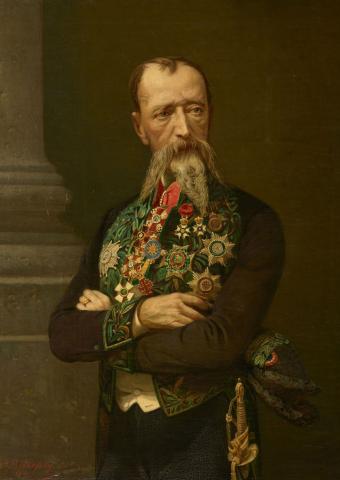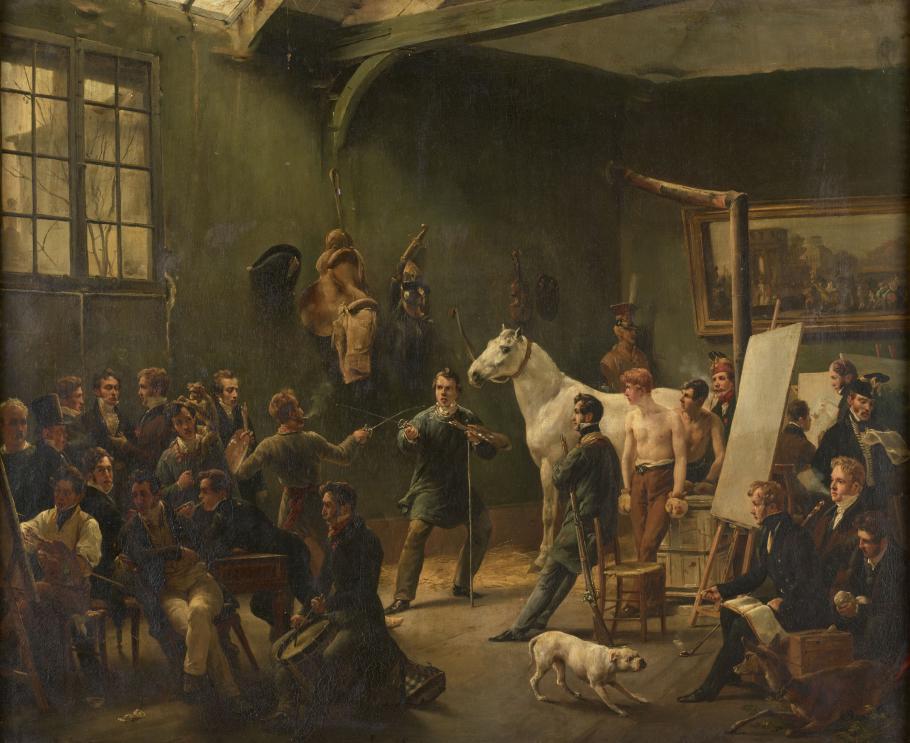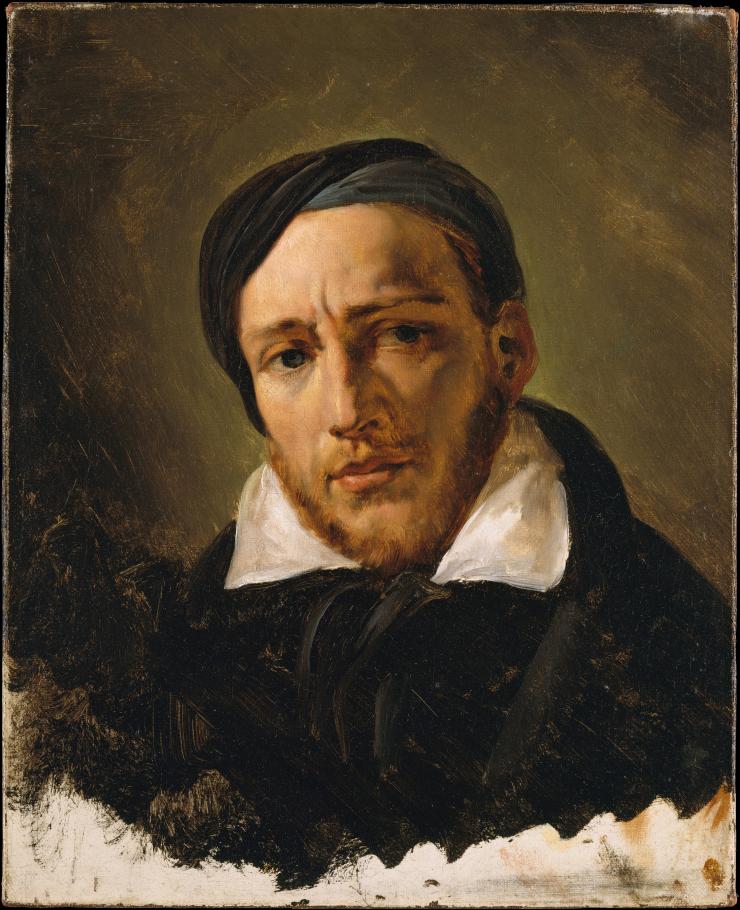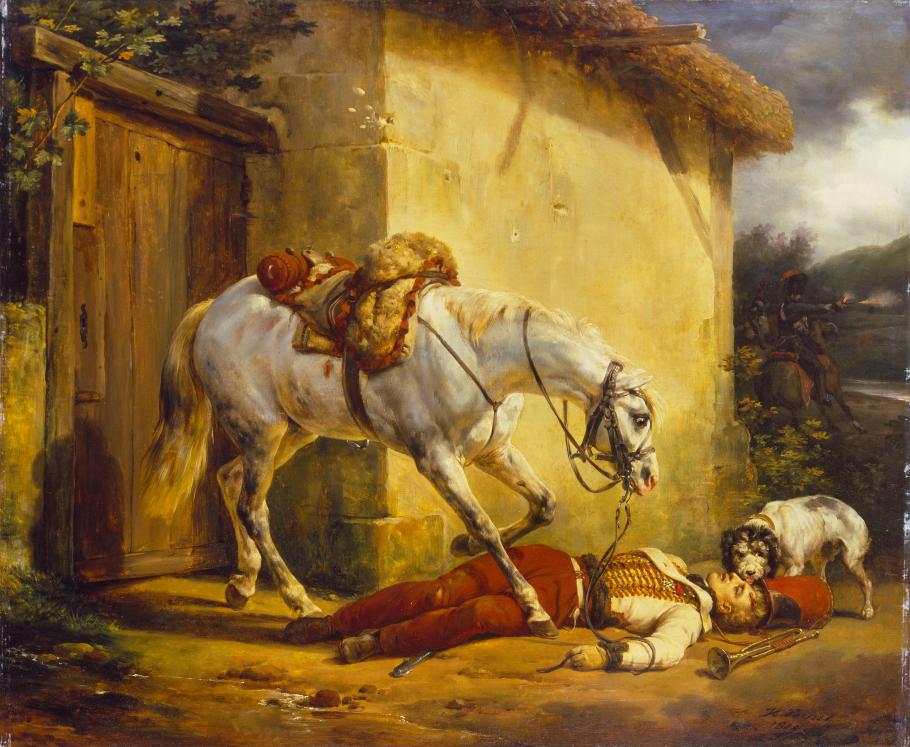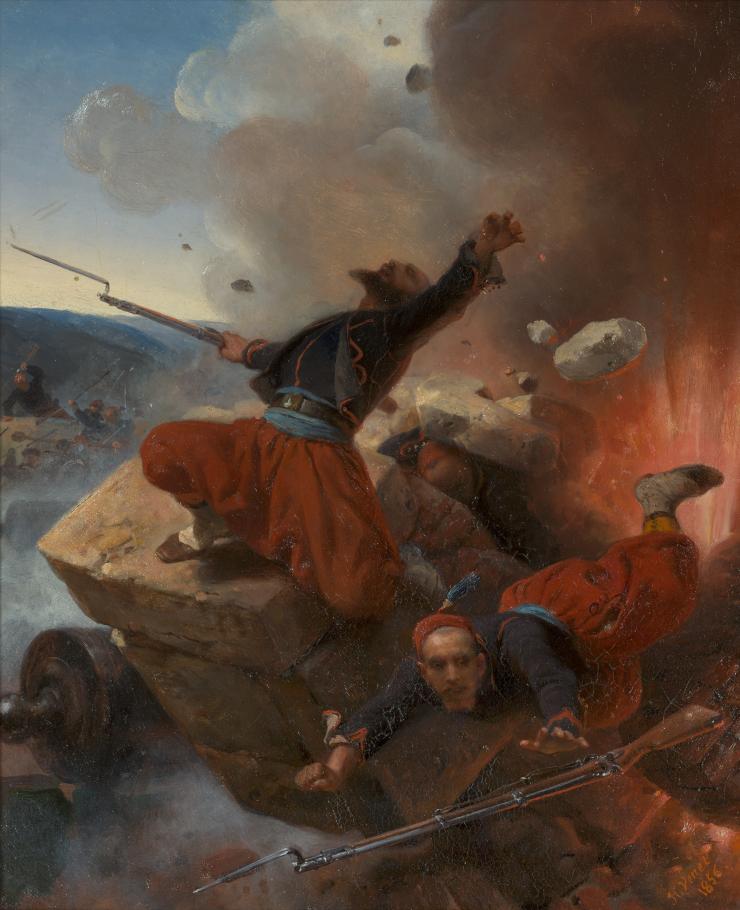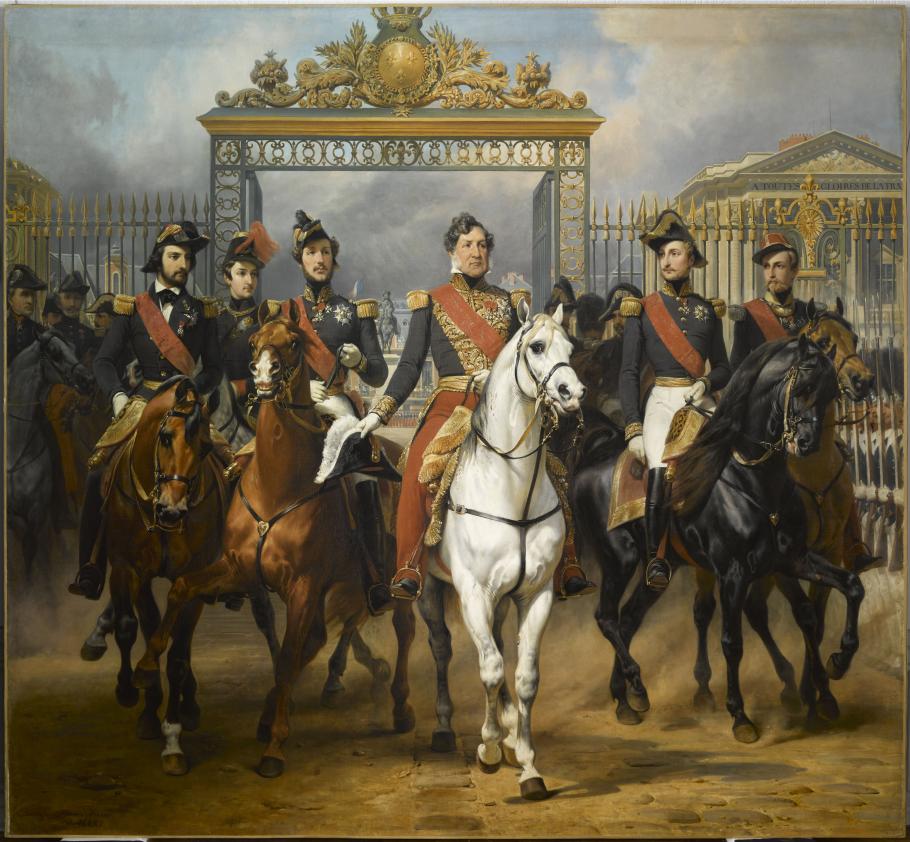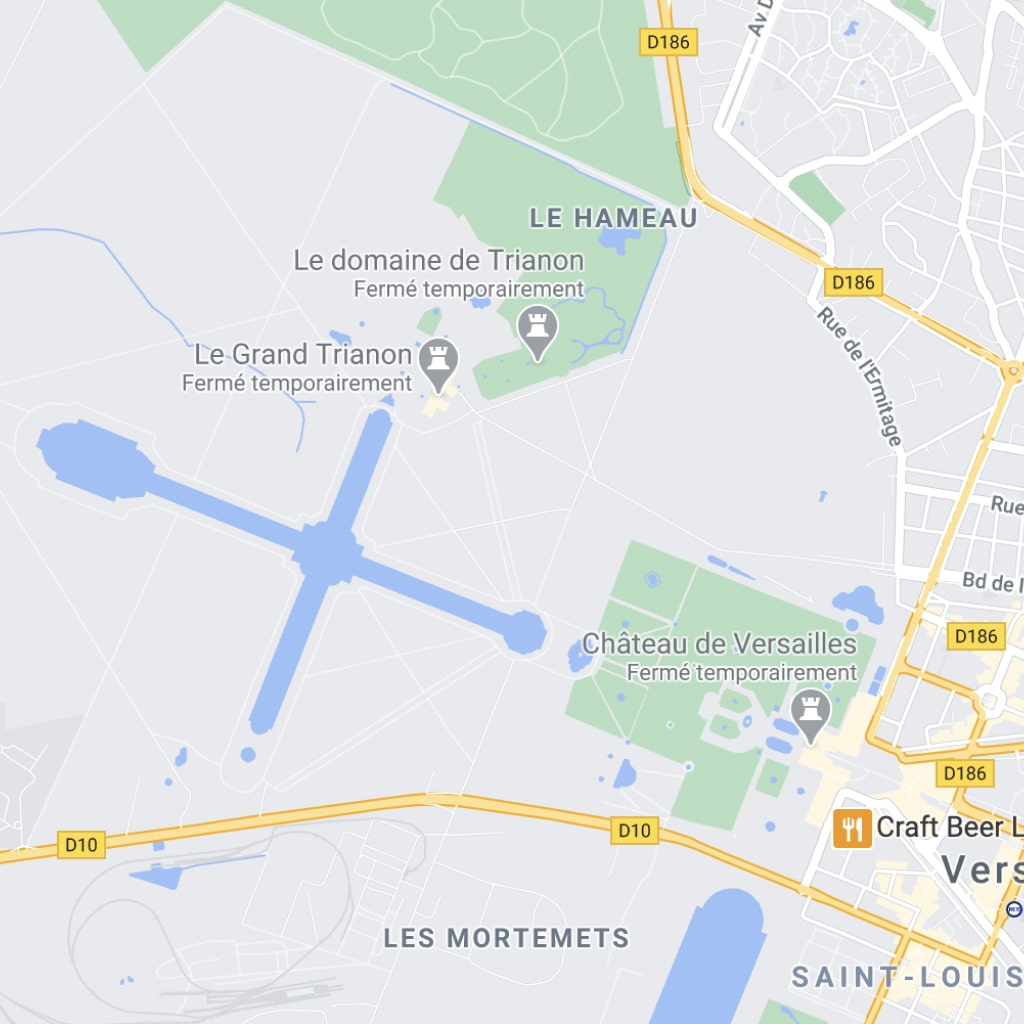The artist
Horace Vernet was born at the Louvre in 1789, the grandson of the painter Joseph Vernet, and the son of the equestrian painter Carle Vernet. He proved himself to be a worthy successor to the dynasty despite failing to win the Prix de Rome, and very quickly found favour with Napoleon I and his family. He initially moved in Romantic circles in the 1820s, alongside his friend Théodore Géricault, where he developed an easy, appealing style and learned the art of lithography.
When Horace Vernet’s paintings were rejected by the Salon in 1822, he organized a solo exhibition in his own studio which was such a resounding success that it set the seal on his reputation. This marked the beginning of a long official career. This exhibition aims to demonstrate how Horace Vernet’s works evolved stylistically from the Romantic verve he shared with Géricault to more considered battle painting.
Horace Vernet was the favourite painter of the Duke of Orléans. When he became the King of the French, Louis-Philippe launched a major building project at the Palace of Versailles to abolish its status as a royal residence and transform it into a museum dedicated “to all the glories of France”. He was passionate about history, a discipline which was evolving into a science at that time, and decided to bring together all the painted, sculpted, drawn and engraved images of major historical events and figures since the birth of the French nation. He commissioned a number of paintings from Vernet to adorn the walls of the Historic Galleries at the Palace of Versailles. The King of the French commissioned several paintings which have earned their place in history, such as The Capture of the Smalah of Abd-el-Kader, depicting Louis-Philippe’s second son, the Duke of Aumale.
The Capture of the Smalah of Abd-el-Kader, in the Smalah Room © Thomas Garnier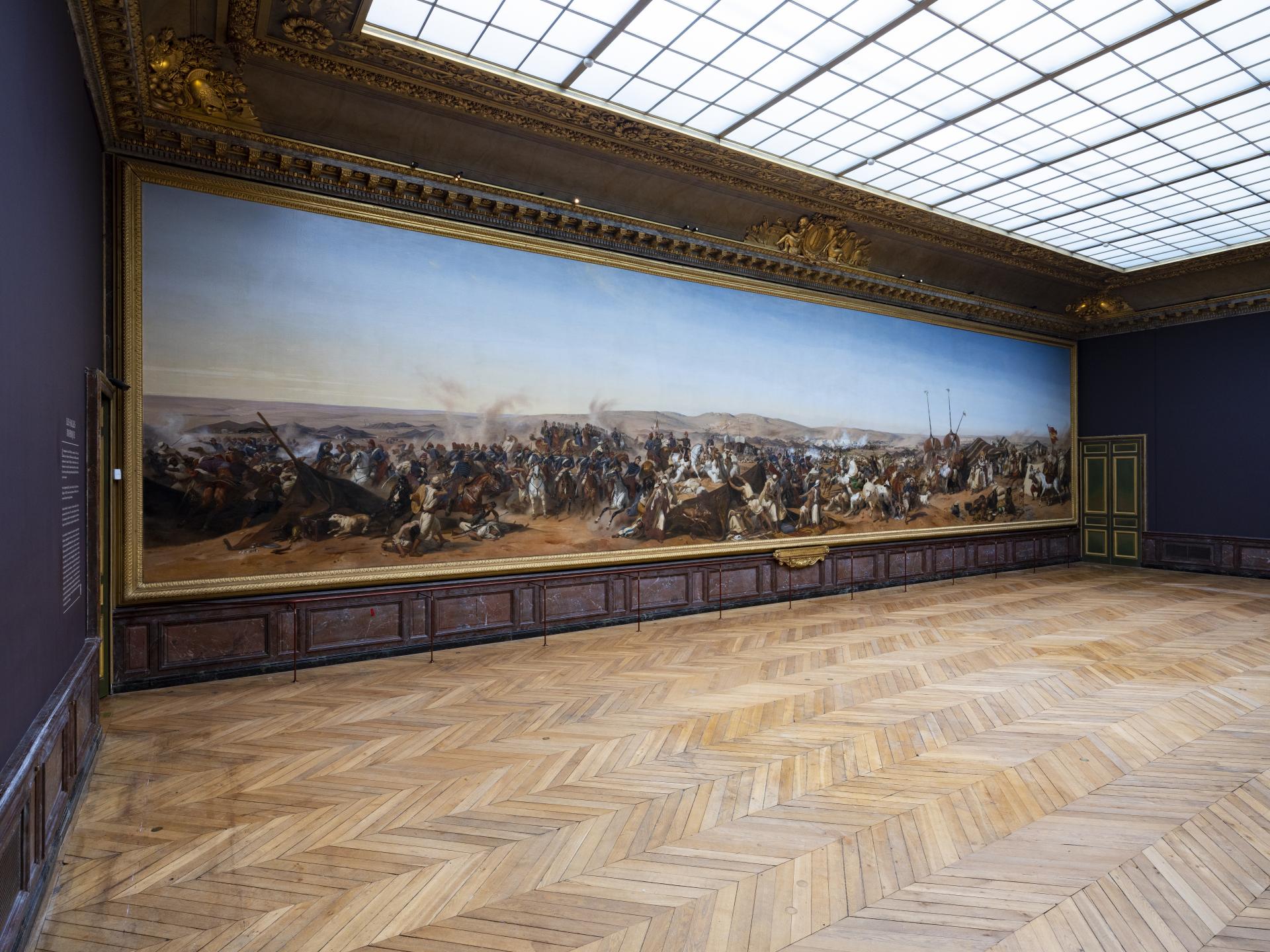
This period of major commissions was punctuated by numerous visits to the East and Russia. During the Second Empire, Vernet’s career was publicly acknowledged in a retrospective of his work at the Universal Exhibition in 1855. He died in 1863 after being awarded the insignia of a Grand Officer of the French Legion of Honour.

Portrait of Horace Vernet in the uniform of a member of the French Academy, by Alexis Witkofsky
© Château de Versailles, Dist. RMN / C. Fouin
The podcast
Who was Horace Vernet? He was crowned with success during his lifetime, but why is his name scarcely remembered today?
In this new podcast, eight actors voice the artist’s contemporaries. Immerse yourself in the soundscape of Horace Vernet from Théodore Géricault to Charles Baudelaire, and from the Villa Médicis to his studio in Paris and the Palace of Versailles!
André Dussollier features as the voice of this forgotten painter who was actually considered to be "the Alexandre Dumas of painting" in his day.
At the Paris Podcast Festival 2024, the podcast "Horace Vernet, ‘the Alexandre Dumas of painting’” received two awards in the Grand Prix de la Créativité Podcast:
1st place in the category "Best voice/presenter"
3rd place in the category "Best sound production"
A Palace of Versailles podcast produced by Moustic Studio, written by Nejma Zegaoula, Head of Audiovisual Projects at the Palace of Versailles, with scientific input from Valérie Bajou, Head Curator and curator of the exhibition “Horace Vernet” at the Palace of Versailles, and Frédéric Lacaille, Head Curator of 19th century paintings at the Palace of Versailles.
Discover all the Palace of Versailles' podcasts
The exhibition
From 2023 to 2024, the Palace is devoting a major retrospective to Horace Vernet. Over a period of more than thirteen years, this artist, who was intimately associated with the Versailles of Louis-Philippe, painted some of the finest pictures in the Historic Galleries.



